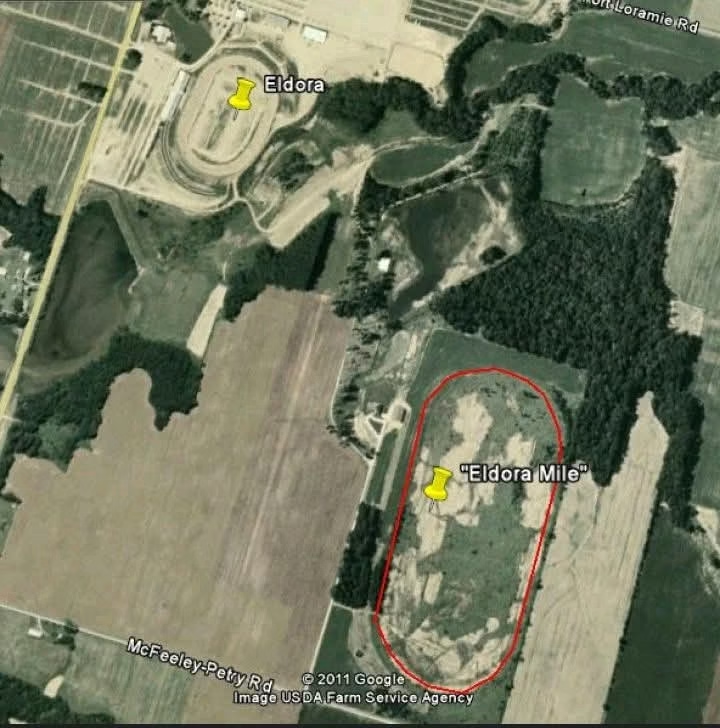Ghosts on the Dirt: Is Eldora Speedway Still the Soul of American Racing?
By Jackson Myers | American Motorsport Weekly
The sun sinks low over Rossburg, Ohio, and the shadows stretch long across the hallowed clay of Eldora Speedway. Dust swirls in the air like restless spirits, whispering the names of legends long passed. Somewhere beyond turn three, where the dirt banks like a wave about to crash, the ghost of Earl Baltes still walks—watching, judging, maybe even smiling.
Eldora isn’t just a racetrack. It’s a monument. A cathedral of horsepower. A living museum built not from marble, but from mud, sweat, and the thunder of V8s screaming under a country sky. But as modern racing surges toward glitz, speedways in Vegas and Daytona shine with LED dazzle and multimillion-dollar tech, the question lingers like tire smoke in the grandstands: Is Eldora Speedway still the soul of American racing?
For many, the answer is a guttural, unshakable “yes.”
Built in 1954 by local bandleader-turned-promoter Earl Baltes, Eldora was carved out of cornfield clay with a vision no bigger than a Saturday night crowd and no smaller than a dream to create the greatest dirt track in the world. That dream took root. It grew. It roared.
Baltes ran the track for over 50 years, cultivating a culture that mixed country grit with showbiz flair. He offered unheard-of purses—$100,000 to win the Dirt Late Model Dream—and attracted the best drivers from across the country. Sprint cars, stock cars, late models—they all came to Eldora. They still do. But the times, they are shifting.
Tony Stewart, the NASCAR champion and dirt-racing devotee, bought Eldora in 2004. Under his ownership, the track has seen major upgrades: a high-tech scoring tower, safer barriers, and even a touch of asphalt for modern haulers. Stewart has kept Baltes’ spirit alive, but has he kept the soul?
“It’s different now,” says Clint Meyer, a fourth-generation race fan who’s been coming to Eldora since 1978. “Still special, still magic—but there’s something… slicker. Cleaner. Polished. That’s not how dirt should feel.”
He’s not alone. Many traditionalists see Eldora’s growing popularity as both a blessing and a curse. Events like the Eldora Million—offering a million-dollar payout for late model drivers—have brought national attention. But they’ve also brought sponsors, corporate pressure, and social media influencers who never knew the difference between a cushion and a slider.
Yet, on a summer night, when the cars roar and the clay flies, Eldora still becomes something holy.
During the World 100—dubbed the “Super Bowl of Dirt Late Model Racing”—drivers don’t just race for trophies. They race for history. They race for ghosts.
“I remember standing on the stage when I won the World,” says fictional racer Kyle Dugan, a grizzled veteran with two decades in dirt. “And I swore I felt Earl’s hand on my shoulder. You can call me crazy, but you don’t win at Eldora unless the track lets you.”
Dugan is one of many who believes Eldora is haunted—not by horror, but by heritage. The souls of Baltes, of Donnie Moran, of Jack Hewitt—they’re part of the clay now, baked into the banked turns and blown into the air with every lap.
“There’s a weight to racing here,” Dugan says. “You feel like you’re not just racing the guy next to you. You’re racing everyone who ever did.”
In an era where sim-racing dominates and electric cars whisper instead of roar, Eldora clings proudly to its analog heart. The track doesn’t apologize for its dust, its noise, its rawness. It’s not trying to be modern. It’s trying to be eternal.
That’s why, every September, thousands pile into campers and trucks and line up for miles just to get through the gates. They bring grills, coolers, and lawn chairs. They don’t come for comfort. They come for connection—to the past, to each other, to a version of America where Saturdays still meant something.
Kids run barefoot. Grandpas swap stories. And somewhere in the stands, a father tells his daughter how “The King,” Steve Kinser, once passed six cars on the outside in the final lap, dust so thick no one saw it till the checkered flag dropped.
“You can’t buy that kind of memory,” says Lisa Rodriguez, who drives in from Kentucky every summer with her two sons. “You can’t tweet it or stream it. You have to live it.”
Yet, as the sport evolves, the pressure mounts. There are whispers that the dirt world might eventually split—between tracks like Eldora, rich in tradition, and emerging, sanitized arenas designed for TV. Eldora’s own flirtation with NASCAR’s Truck Series in the past sparked both praise and protest.
“The soul of Eldora is dirt,” says fictional dirt-track historian Malcolm Brant. “The moment it starts to chase pavement dreams, it risks losing its identity. But so far, Stewart’s been a good steward. He knows what’s at stake.”
Indeed, Tony Stewart often refers to Eldora as “hallowed ground.” He’s invested not just in the infrastructure, but in preserving its aura. He knows that what makes Eldora powerful isn’t the money—it’s the mud.
And maybe that’s the answer.
Eldora isn’t trying to compete with Charlotte or Indianapolis. It doesn’t have to. It lives in a different world—a parallel timeline where racing is still primal, where cars slide sideways into legend, and where the ghosts of dirt-racing heroes still ride shotgun.
So, is Eldora still the soul of American racing?
As the last lap winds down, the engines fade into echoes, and the dust settles beneath the moonlight, the answer comes clear—not in words, but in feeling.
In the hush after the checkered flag, when all you can hear are cicadas and the clink of beer bottles, there’s a presence in the silence. Not absence—but continuation. A whisper of everything that’s ever happened here and everything still to come.
Yes. Eldora is still the soul.
And the soul doesn’t die. It drifts. It roars. It rises with every spin of the dirt.
